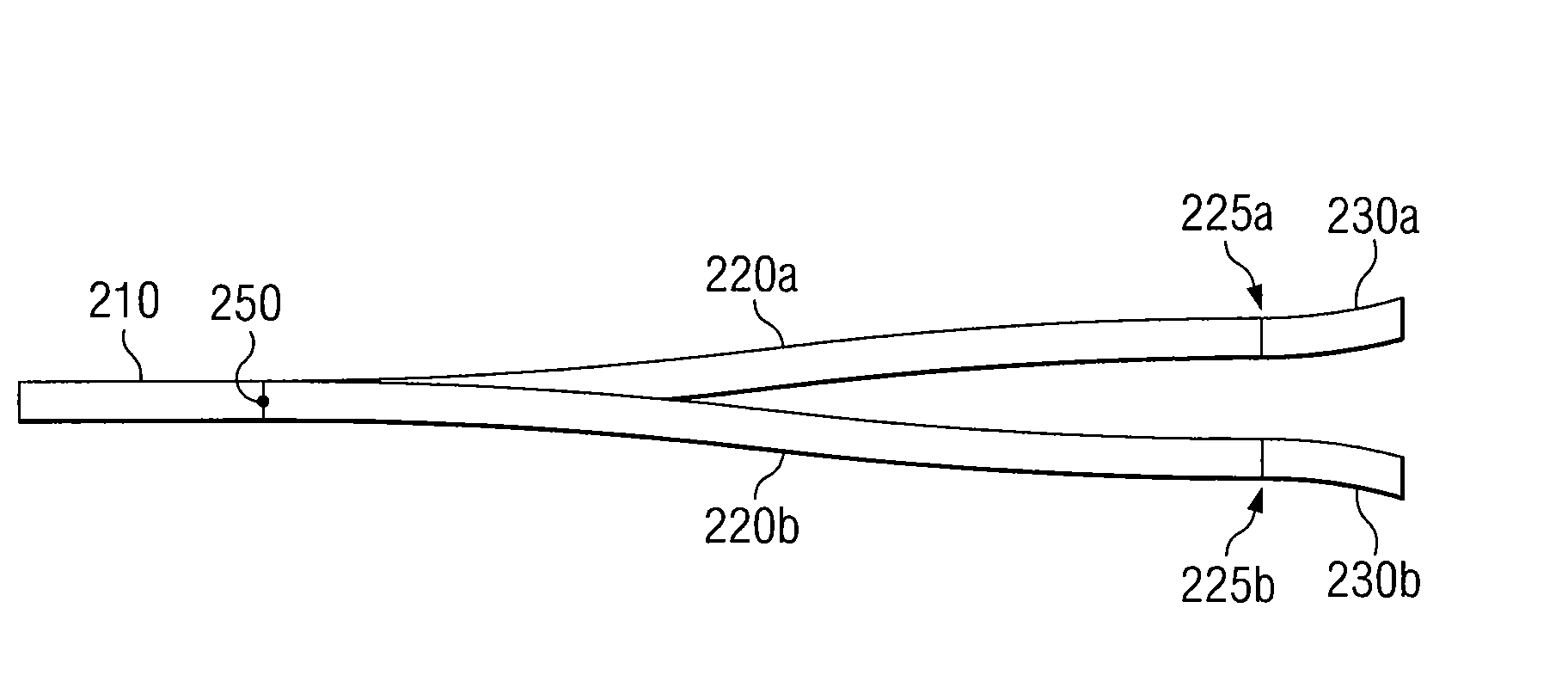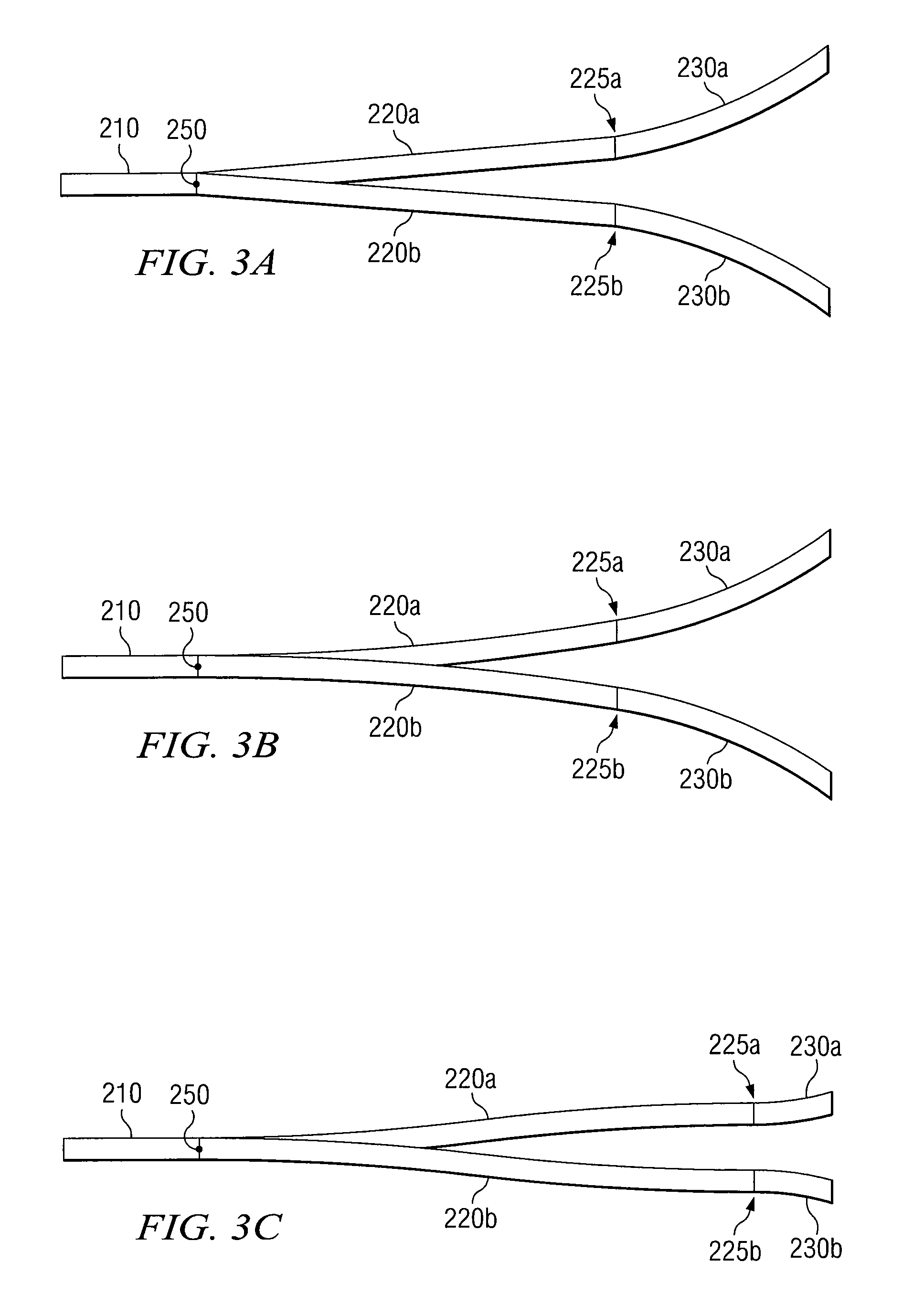Optical Beam Splitter
a splitter and optical beam technology, applied in the field of optics, can solve the problems of reducing the intensity of the two light beams exiting the optical splitter, propagating loss of the input light beam, etc., and achieve the effect of reducing or eliminating at least some of the disadvantages and problems
- Summary
- Abstract
- Description
- Claims
- Application Information
AI Technical Summary
Benefits of technology
Problems solved by technology
Method used
Image
Examples
Embodiment Construction
[0015]FIGS. 1A and 1B depict example optical systems 100a and 100b where a particular embodiment may be utilized. Optical systems 100 include a modulated light source 110a, a continuous wave light source 110b, data sources 120a and 120b, optical splitters 130a and 130b, one or more receiving devices 140, and a modulator 150. Light sources 110 typically consist of lasers or any other device that produces a light beam. Data source 120a is coupled to modulated light source 110a via electrical data link 160a, and data source 120b is coupled to modulator 150 via electrical data link 160b. Data sources 160 provide data to be modulated onto a light beam. Modulator 150 includes an optical splitter 130b and modulates data from data source 120b onto a continuous wave light beam received from continuous wave light source 110b. Light sources 110 are coupled to optical splitters 130 via optical links 170. Receiving devices 140 are also coupled to optical splitter 130a and modulator 150 via optic...
PUM
 Login to View More
Login to View More Abstract
Description
Claims
Application Information
 Login to View More
Login to View More - R&D
- Intellectual Property
- Life Sciences
- Materials
- Tech Scout
- Unparalleled Data Quality
- Higher Quality Content
- 60% Fewer Hallucinations
Browse by: Latest US Patents, China's latest patents, Technical Efficacy Thesaurus, Application Domain, Technology Topic, Popular Technical Reports.
© 2025 PatSnap. All rights reserved.Legal|Privacy policy|Modern Slavery Act Transparency Statement|Sitemap|About US| Contact US: help@patsnap.com



